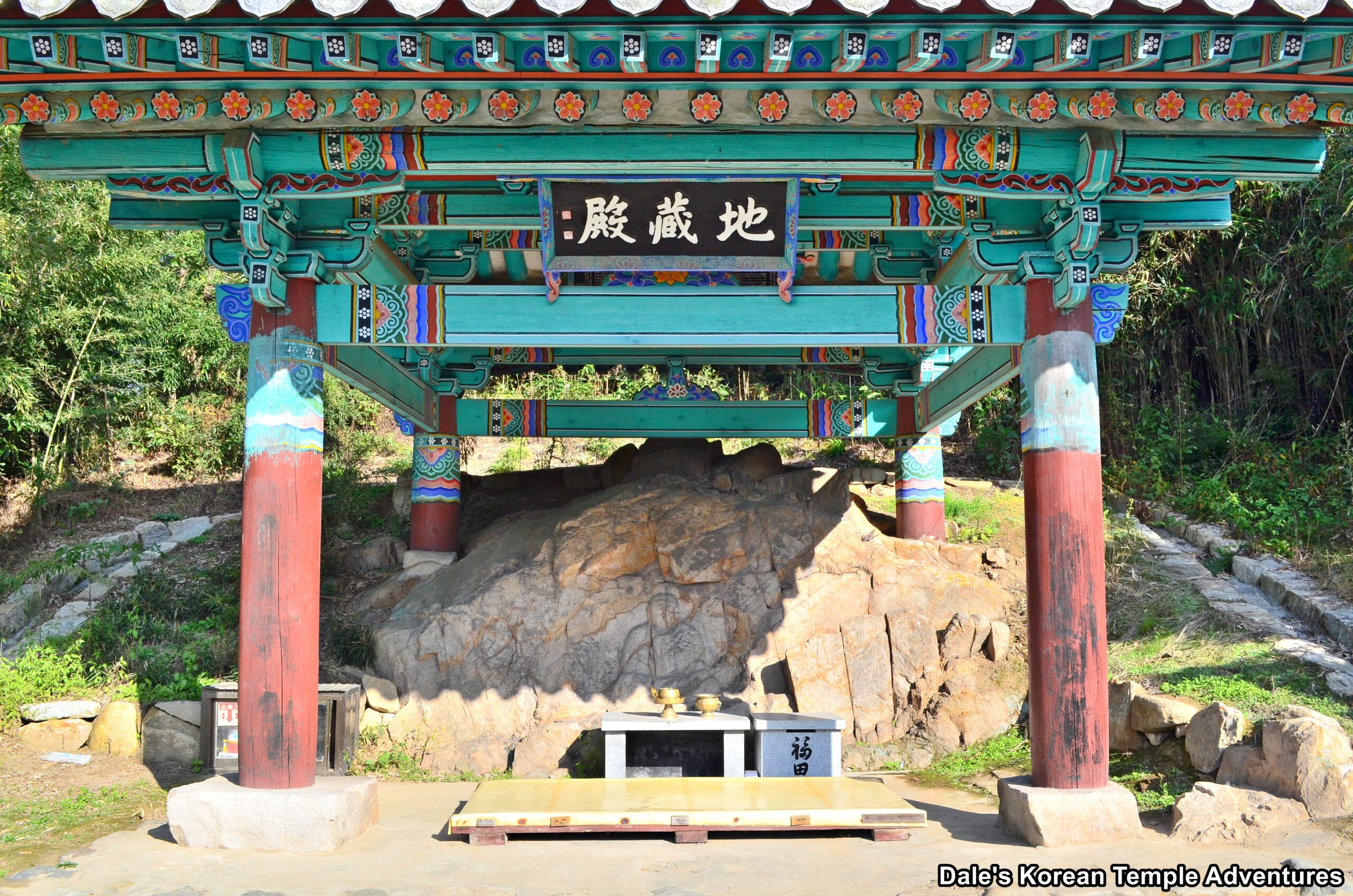
Temple History
Jungsaengsa Temple is located on the northwestern part of Mt. Nangsan (99.5 m) in Gyeongju, Gyeongsangbuk-do. Jungsaengsa Temple is a branch temple of Bulguksa Temple. Jungsaengsa Temple was first founded in 679 A.D. Also, and alongside Baengnyulsa Temple and Minjangsa Temple, Jungsaengsa Temple was central to the worship of Gwanseeum-bosal during Unified Silla (668-935 A.D.). After this point in history, however, very little is known about Jungsaengsa Temple and when it eventually fell into disrepair. Jungsaengsa Temple would eventually be reconstructed in the 1940’s on the old temple site. And today, there are a handful of temple structures at Jungsaengsa Temple.
Jungsaengsa Temple is home to the Rock-Carved Seated Bodhisattva Triad in Nangsan Mountain, which is Korean Treasure #665. Also, and where the temple is located, which is on Mt. Nangsan, it’s the Archaeological Area of Nangsan Mountain, which is Historic Site #163.
Temple Myths
In total, there are four different myths directly connected to Jungsaengsa Temple and Gwanseeum-bosal (The Bodhisattva of Compassion) from the Samguk Yusa, or Memorabilia of the Three Kingdoms in English. The first of these myths is about a Chinese painter from Tang that eventually moves to Silla:
“Once upon a time, the Celestial Emperor of China had a favourite whose beauty was unsurpassed by any other woman in the kingdom, nor was her like to be found in any pictures of girls as fair as May roses or June peonies in all ages and climes. Wishing to look upon her always in bloom in her youth and beauty, the Emperor decided to have her portrait painted.
“The court artist was therefore ordered to paint the portrait. The name of this artist isn’t known with certainty, but he is believed to have been Chang Seng-yao, a renowned painter of the state of Wu. During the time of Liang T’ien-chien he served the kingdom of Wu-ling as court artist, right general and magistrate of Wu-hsing. If this be true, then the emperor in the story must have ruled between Liang [502–557 A.D.] and Chen [557–589 A.D.] periods. The Silla book refers to him as Tang emperor, but this is simply because the people of Silla were unaccustomed to refer to China as Tang.
“Whoever he was, the artist painted a faithful portrait of this peerless beauty. However, while he was adding the finishing touches to the picture, he was so filled with rapture at the beauty of the woman unfolding before him that his hand trembled and let the brush slip, and it made a mark like a mole just below the portrait’s navel. In consternation he tried to paint it out, but could not. ‘It must be one of her birthmarks,’ thought the artist, ‘but even in a picture women are ashamed of moles on the innermost parts of their bodies.’
“When the portrait was presented to the throne the Emperor scrutinized it closely and then spoke angrily to the artist: ‘This picture is too realistic! How could you have known there was a mole under her navel, and how could you dare to put it in your picture?’ The infuriated Emperor had the artist imprisoned and gave orders for his execution the next day, for burning jealousy of the man’s evident intimacy with his beloved knew no bounds.
“The artist was fairly caught. He would have been hanged immediately but for the intervention of the prime minister, who said, ‘He is as straight as bamboo, and has known no woman but his wife.’
“The Emperor nodded and spoke again to the artist. ‘Since you are so wise as to paint the mole on my woman when you have not seen it, paint a lifelike picture of the lovely woman whom I saw in a dream last night and you shall have my special pardon.’
“The artist painted the graceful figure of the eleven-faced Gwanseeum-bosal [The Bodhisattva of Compassion] and presented it to the throne. ‘This is she!’ exclaimed the Emperor. ‘Now you shall have your liberty.’
“After this narrow escape the artist no longer wished to live in his native country. Accompanied by a wise man named Buncheol, he crossed the sea to Silla, and there he made portraits of the Merciful Goddess in three incarnations [Gwanseeum-bosal], which were placed in Jungsaengsa Temple. The people of Gyeongju admired the holy beauty of these pictures and prayed to the Bodhisattva to fulfill their wishes with heavenly bliss.”
Another myth from the Samguk Yusa about Jungsaengsa Temple and Gwanseeum-bosal (The Bodhisattva of Compassion) concerns a father wishing for a son:
“During the closing years of Silla, in the Tien-cheng period (926-929 A.D.), the childless wife of the nobleman Choe Eunseong prayed to the Buddha at Jungsaengsa Temple to give her a son. Her prayer was heard, and she soon conceived and bore a baby boy. But before the child was three months old the tiger general of Later Baekje, Chin Hwon, sacked Gyeongju, and many people lost their wives and children. Carrying the tiny baby in his arms, Eunseong fled to the temple and implored the aid of the merciful Bodhisattva, saying ‘The enemy soldiers run amok in the King’s capital, attacking women and killing babies. If my son was born through your holy blessing, care for him now and nourish him in your bosom till I come again.’ He wrapped the child warmly and laid him beside the lotus pedestal of the seated Bodhisattva, said a tearful farewell and departed.
“Two weeks later, when the enemy had evacuated the city, Choe Eunseong returned to the temple and found the child in robust health. His body was as white as if he had been newly washed, his breath smelled of fresh milk, and his face beamed with a bright smile. Choe picked the child up in his arms and took him home, where he grew up to be a strong and intelligent man.
“This was Choe Seungno, who rose to the highest posts in the government and had many children who also achieved high position at court, generation after generation.”
And here is the third myth from the Samguk Yusa about Jungsaengsa Temple and Gwanseeum-bosal (The Bodhisattva of Compassion) that concerns the temple’s abbot:
“In March of the tenth year of Tung-huo (992 A.D.), Seong-dae, the abbot of Jungsaensa Temple, knelt before the image of the Bodhisattva [Gwanseeum-bosal, The Bodhisattva of Compassion] and said, ‘I have lived at this temple for many years and I have kept the incense burning in the censer day and night. But now the income from the temple lands has ceased, so that it is impossible for me to continue this service. I must bid you farewell and move to another place.’
“As he finished speaking, the monk was suddenly attacked by drowsiness and fell into a trance. In this state, he heard the low, sweet voice of the Bodhisattva [Gwanseeum-bosal] whisper in his ear: ‘My good monk, do not leave, but abide with me yet. I will go round and get donations for the temple supplies.’
“The monk awoke joyfully from his trance and remained in the temple. Two weeks later two stout countrymen led into the temple grounds a caravan of horses and oxen fully loaded with supplies. The abbot ran out to meet them. ‘Where have you come from?’ he inquired.
“‘We have come from Geumju [Gimhae],’ they replied. ‘A few days ago a strange monk came to our village and told us that he had lived at Jungsaengsa Temple in the Eastern Capital [Gyeongju] for many years. He said that he had come to ask for donations for the temple, which was a great want, and so we collected six large bags of rice and four large bags of salt as gifts. We placed them on the backs of our strong horses and oxen, and here they are. Please come and help us to unload them.’
“‘No monk from this temple has gone out to ask for alms,’ the abbot said. ‘Perhaps you have come to the wrong place.’
“‘The monk guided us,’ the countrymen replied, ‘as far as a well which he called Singyeon-jeong [God-seeing Well] below the hill, and pointed to this temple, saying, ‘Go carefully up the mountain, and you will find a temple above the clouds. I will join you on the temple grounds.’ So here we are.”
“In wonderment the monk entered the Golden Hall with the two countrymen. He was amazed to see them prostrate themselves before the image of Gwanseeum-bosal, whispering to each other that it looked exactly like the monk who had come asking for donations. From that time gifts of rice and salt never ceased to flow into the temple to nourish the Bodhisattva and her devotees.”
And here is the fourth and final story about Gwanseeum-bosal and Jungsaengsa Temple from the Samguk Yusa:
“One evening the temple gate caught fire. All the people living nearby rushed up the hill to help put out the fire and went into the Golden Hall to rescue the image of Gwanseeum-bosal first. But when they arrived it was not there, and it was found outside in the courtyard. All were astonished at this wonder-working of the almighty Bodhisattva.
“In the thirteenth year of Ta-ting, the year of the snake (1173) a monk named Cheomsung lived at Jungsaengsa Temple. He was illiterate, but his inward eye saw Buddha’s mind, and he kept the incense-burner alight with holy flame from morning till night as he knelt before the image of the merciful Bodhisattva.
“Another monk who wanted the temple for himself appealed to the Angel of Shirts [?], saying, ‘Jungsaengsa Temple was created to invoke the Buddha’s grace and blessings on all the myriad of creatures in this nation, and therefore a learned person should be its proprietor. This poor monk knows only enough to say “Namu-amita-bul” and “Gwanseeum-bosal” waking and sleeping. He should be turned out of the temple.’
“‘Very well,’ the angel replied, ‘I will test him.’ The written appeal was presented upside down to Cheomsung, and he took it and read all the sentences aloud in a musical voice, without making a mistake.
“The angel was astonished at this unusual intelligence and clapped his hands, saying ‘Again!’ But this time Cheomsung remained stubbornly silent. ‘Thy soul is aflame with holy inspiration. Such a monk as thou art Silla’s boast,’ the angel exclaimed. ‘Stay where thou art and be happy, and may Buddha bless thee!’
“This story was told to the village elders near the temple by the hermit Kim In-bu, who had been a friend of the wonderful monk Cheomsung. It has been relayed from mouth to mouth throughout Silla to this day.”
Temple Layout
Just a little past the Neungji-tap Pagoda, and down a narrow dirt road, you’ll eventually come to Jungsaengsa Temple. Straight ahead is the compact Daejeokgwang-jeon Hall. The exterior walls to the main hall are lined with two sets of murals. The first, which is on top, are quickly fading and dedicated to the Shimu-do (Ox-Herding Murals). These bluish tinged murals are joined by scenic paintings in a yellow hue. As for inside the Daejeokgwang-jeon Hall, and resting on the main altar, is a solitary image of Birojana-bul (The Buddha of Cosmic Energy). This central statue is then backed by two beautiful dragon murals. The entire interior of the main hall is lined with older Buddhist-motif murals dedicated to Jijang-bosal (The Bodhisattva of the Afterlife) and Gwanseeum-bosal (The Bodhisattva of Compassion). There is also a painting dedicated to a curmudgeonly-looking Bodhidharma, an agwi (hungry ghost), and other murals. There’s also an older looking Shinjung Taenghwa (Guardian Mural) that hangs on the far left wall.
To the right of the main hall are a set of temple buildings that include the temple’s kitchen. It’s just past this building, and up a long set of stairs, that you’ll come to the newly built Samseong-gak Hall. There are a pair of fierce-looking tigers just outside the hall’s main doors. These paintings prepare you for some of the most beautiful shaman paintings dedicated to Sanshin (The Mountain Spirit), Chilseong (The Seven Stars), and Dokseong (The Lonely Saint) in Korea. Of note, take a look at the colourful peacock feathered fan that Sanshin holds in his hand.
And just to the left of the Daejeokgwang-jeon Hall, and past the monks’ dorms, is the Rock-Carved Seated Bodhisattva Triad in Nangsan Mountain. Up a little pathway, and under a newly built wooden pavilion, is the badly eroded and cracked rock carving from Unified Silla (668-935 A.D.). There is a central Bodhisattva image with both a body and a head. And there are two attendants on either side of this central Bodhisattva. Both attendants are armored and keep a distance from the principal Bodhisattva who is clothed in a hempen hood and a robe similar to that of a monk. The attendant to the left has a sword in their right hand, while the attendant to the right holds a weapon in both of its hands. This tends to signify that these attendants are in fact guardian deities. However, outside the central image of the Bodhisattva, it’s hard to discern much else of this carving.
How To Get There
From the Gyeongju Intercity Bus Terminal, you’ll need to board Bus #604 that heads towards the Gyeongju National Museum. The bus ride lasts nine stops, and you’ll be let off at the Cheotbaeban stop – 첫배반. From this stop, you’ll need to walk ten minutes uphill towards Jungsaengsa Temple and the Neungji-tap Pagoda.
Overall Rating: 5/10
Jungsaengsa Temple is a historic temple that is undergoing all-new development. Of note is the beautiful interior of the Daejeokgwang-jeon Hall and the stunning shaman murals housed inside the Samseong-gak Hall. Adding to this artistry is the ancient carvings of the Rock-Carved Seated Bodhisattva Triad in Nangsan Mountain. While hard to discern the finer points of this Silla-era Buddhist artwork, the overall expression can be felt.
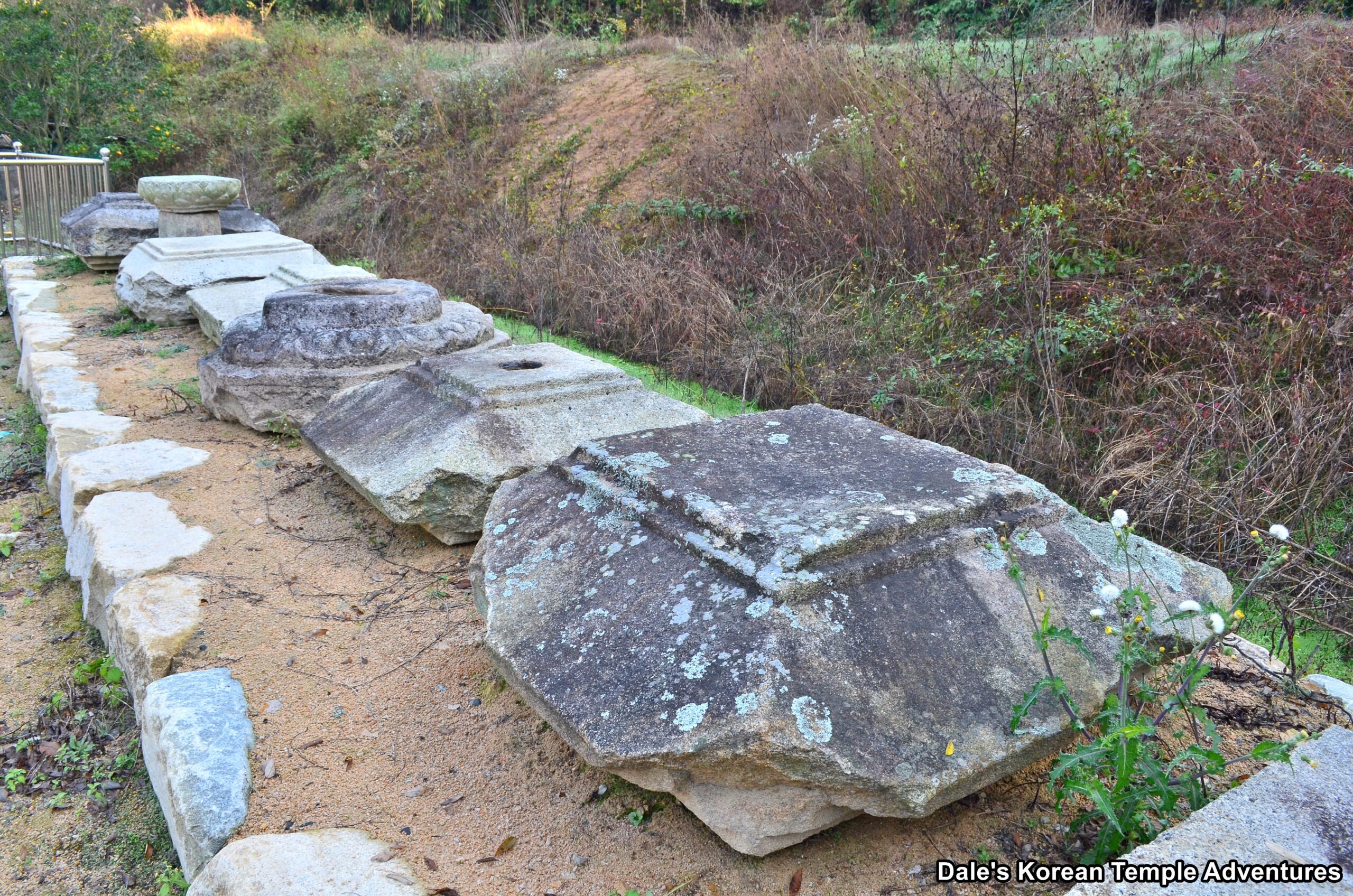
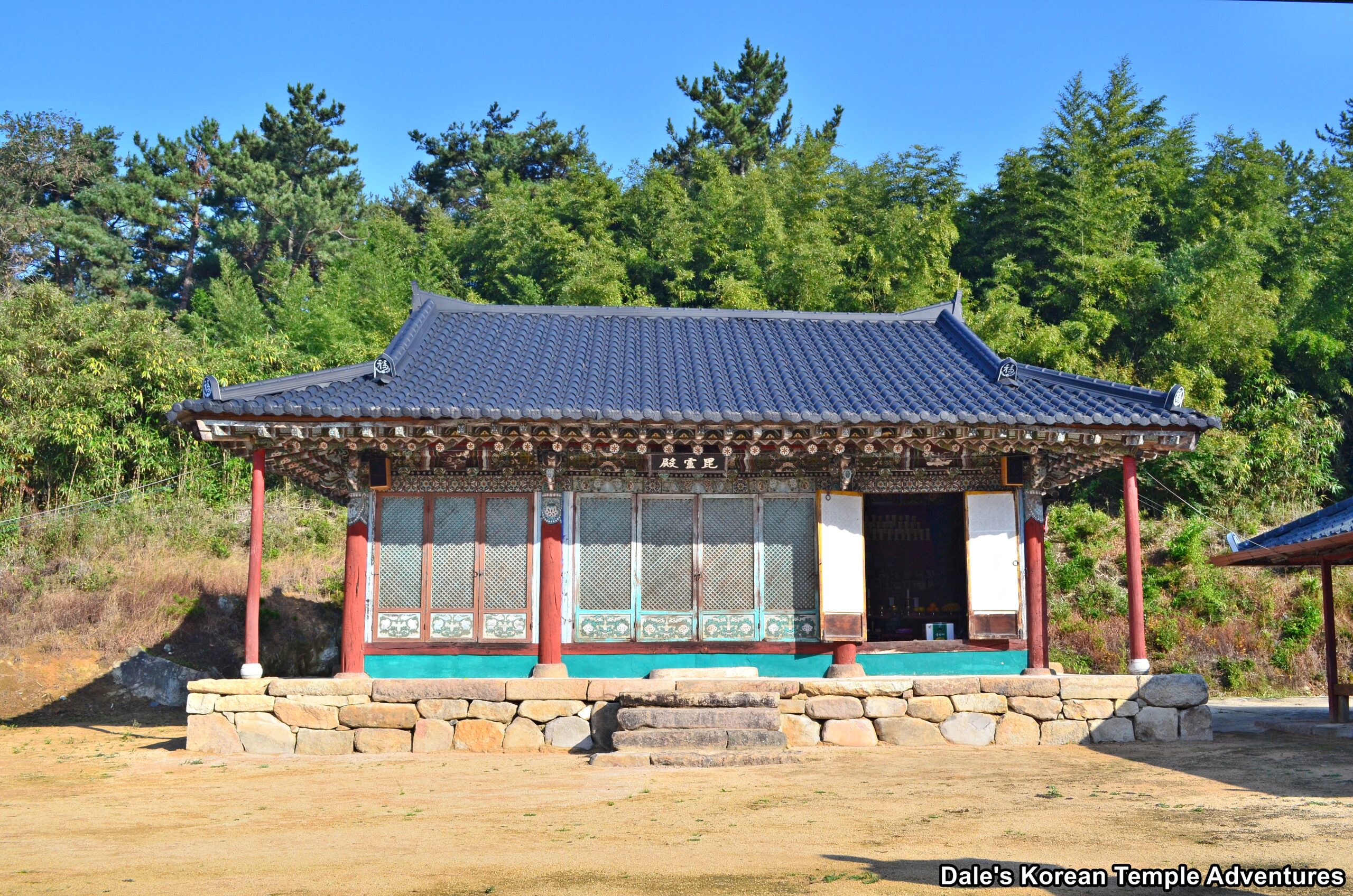
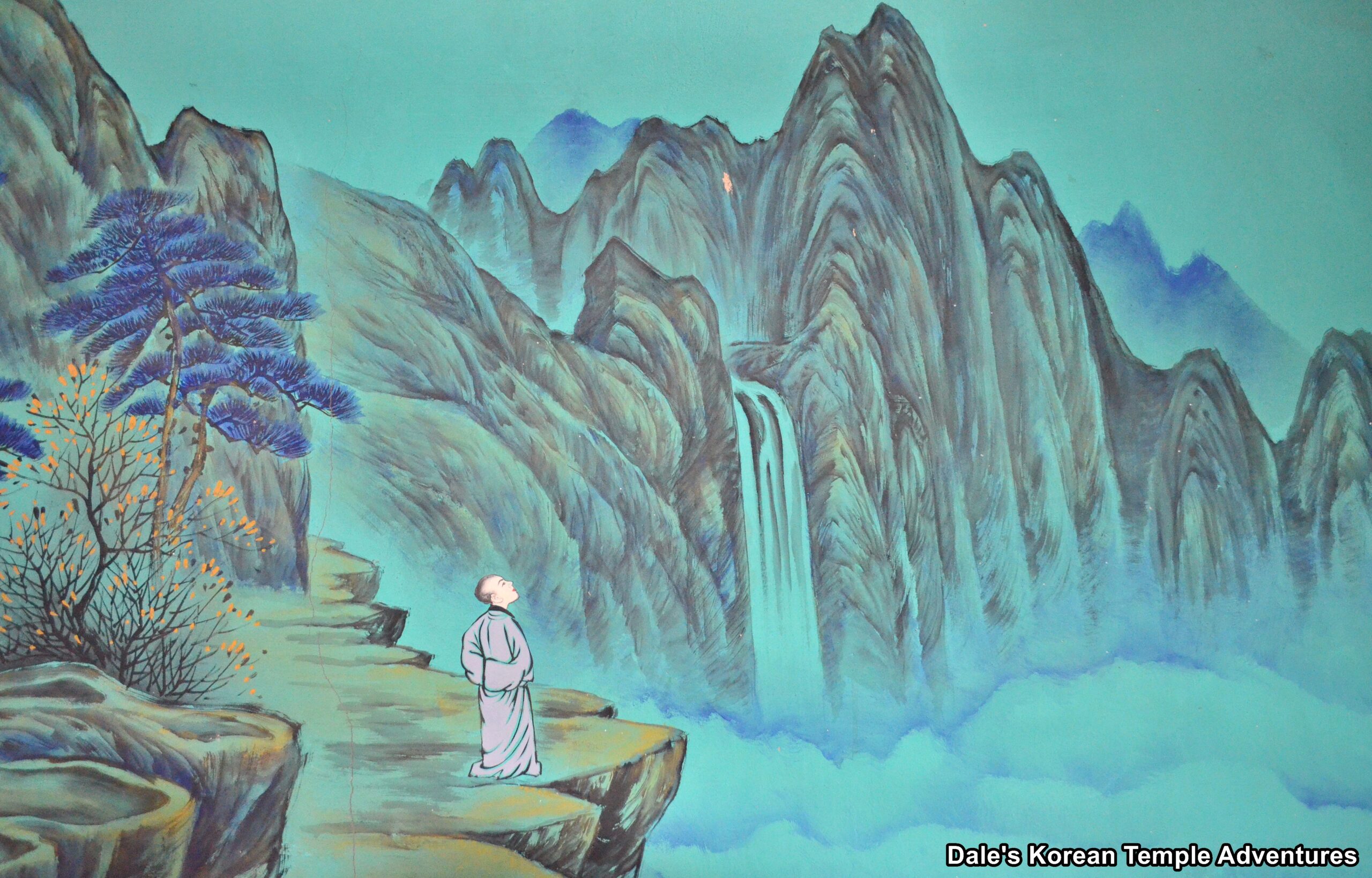
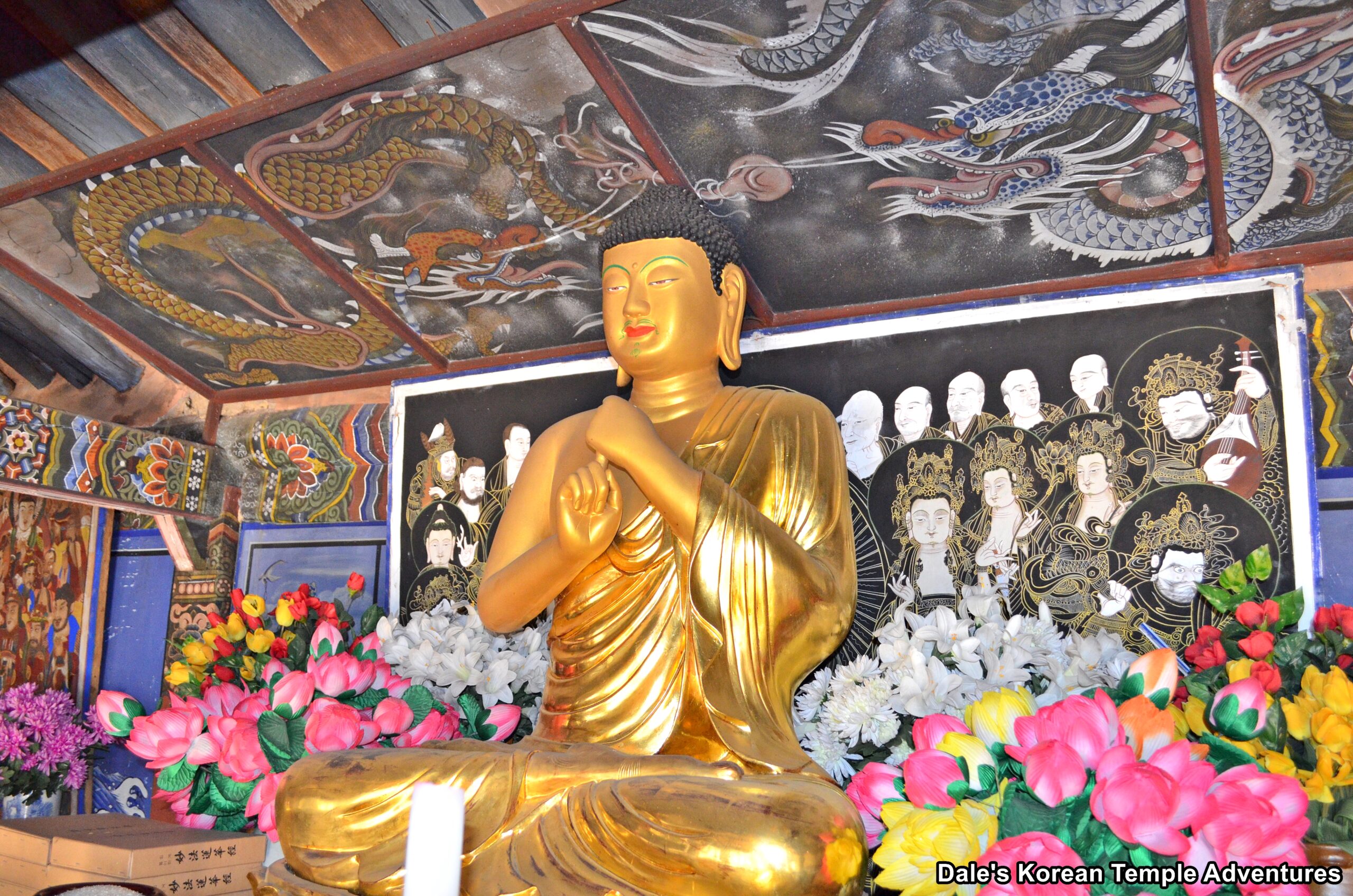
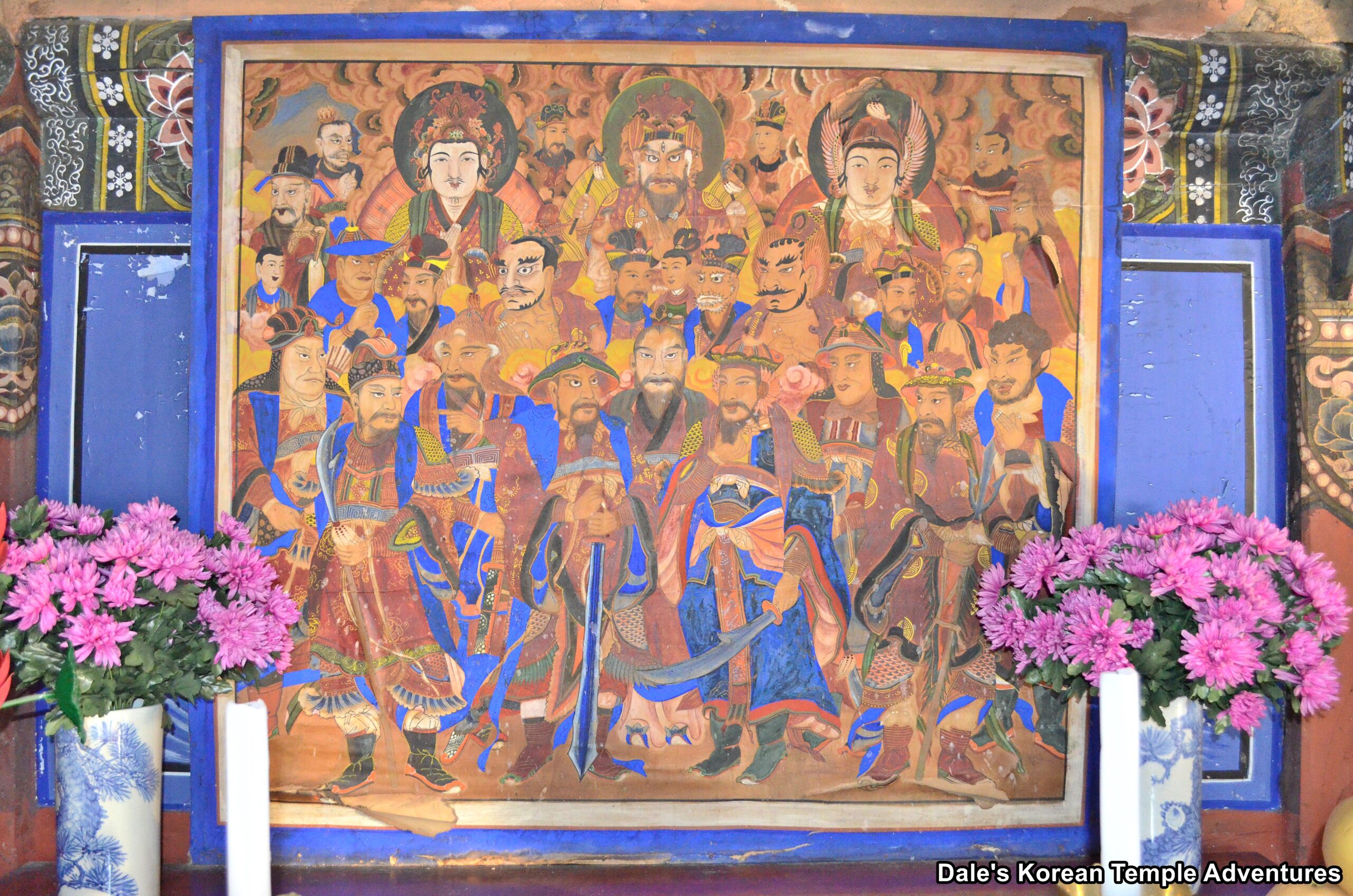
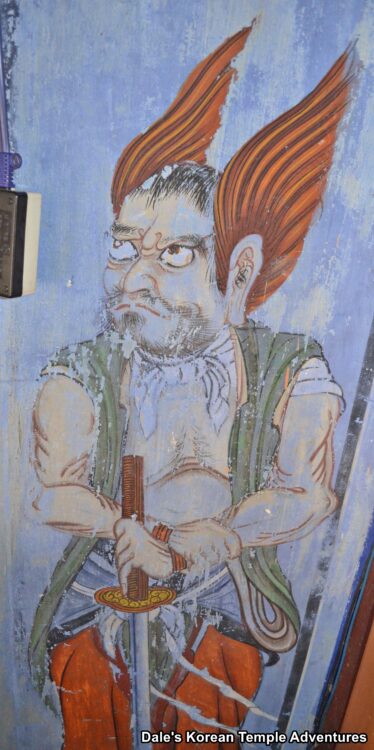
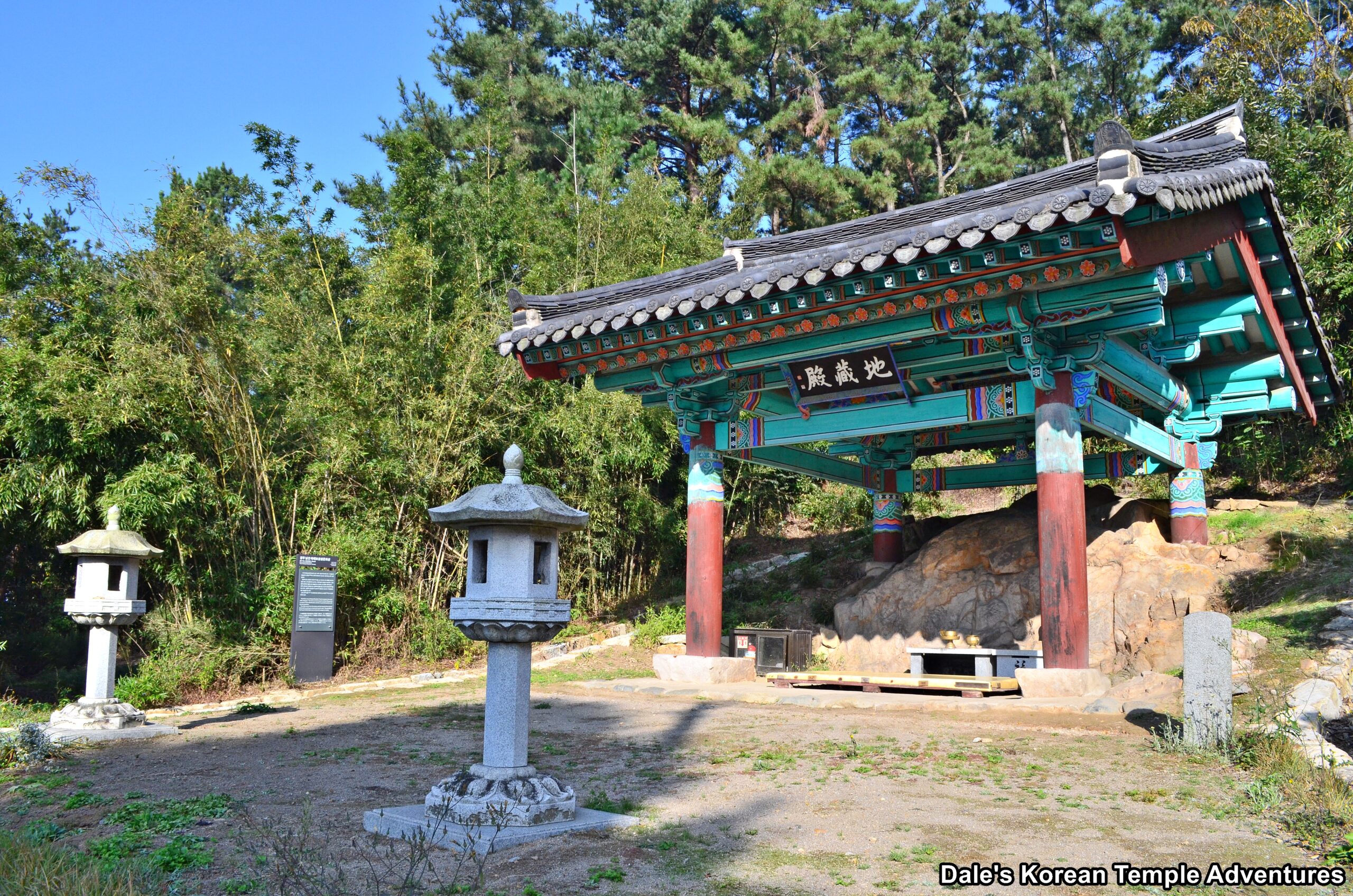


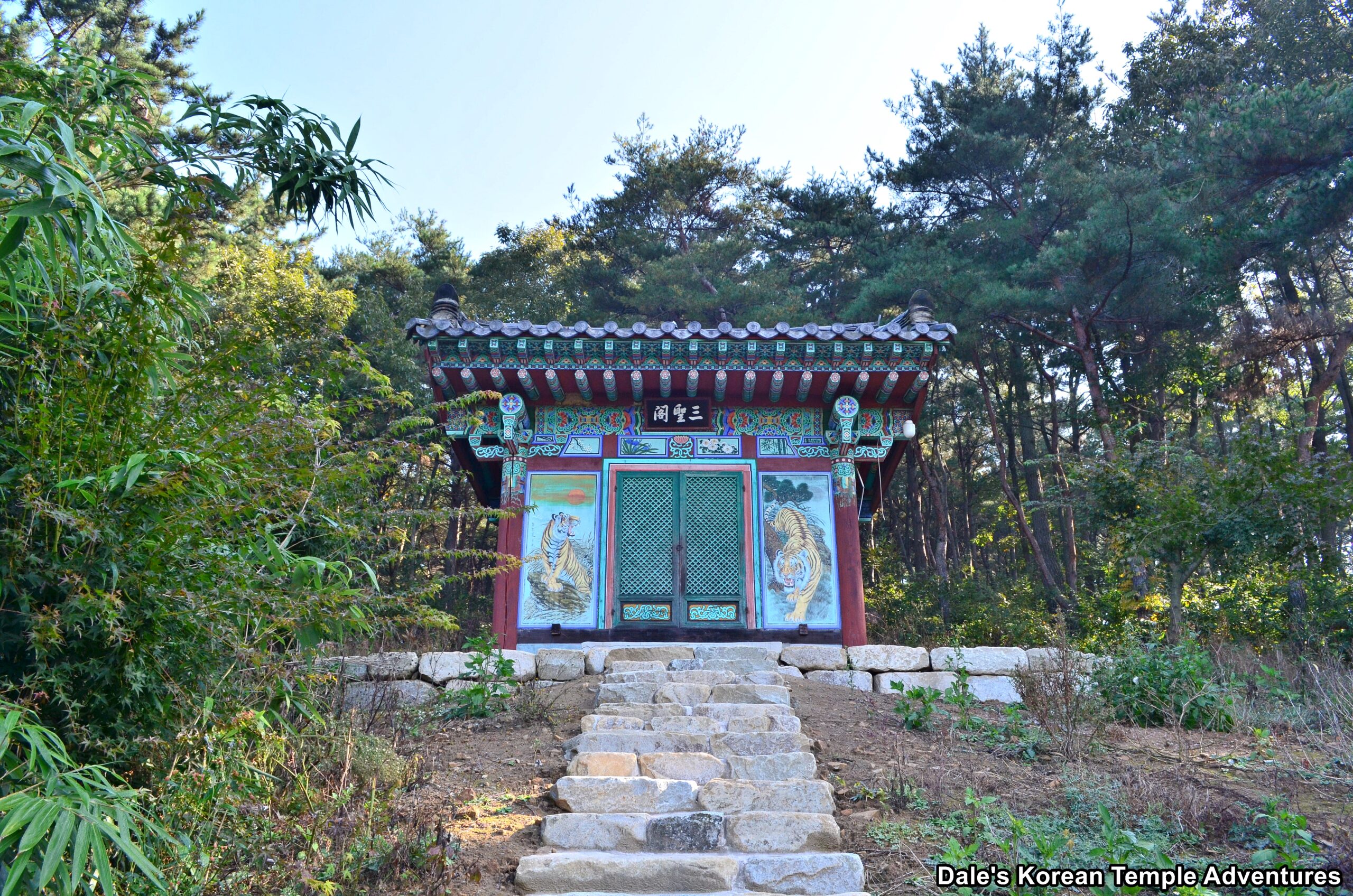
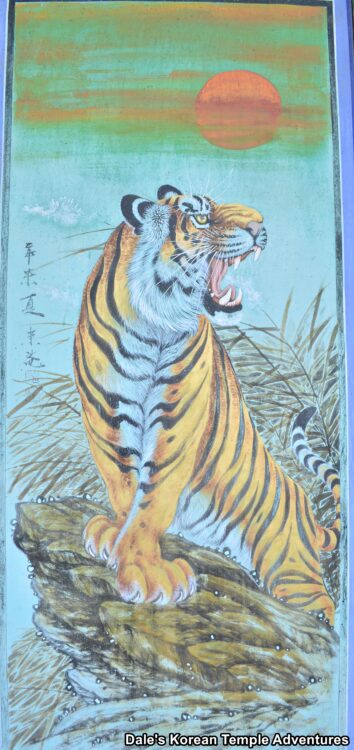
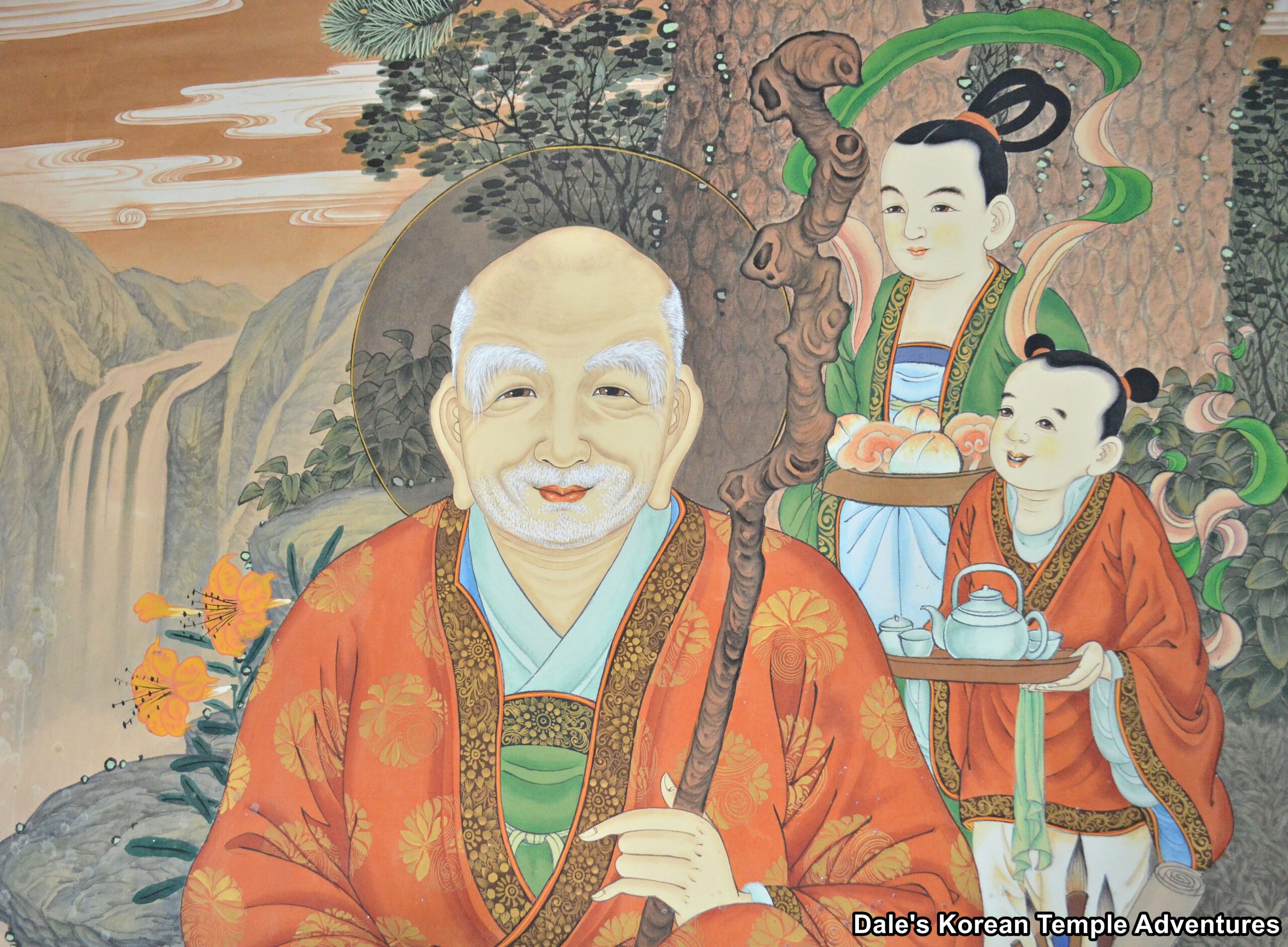
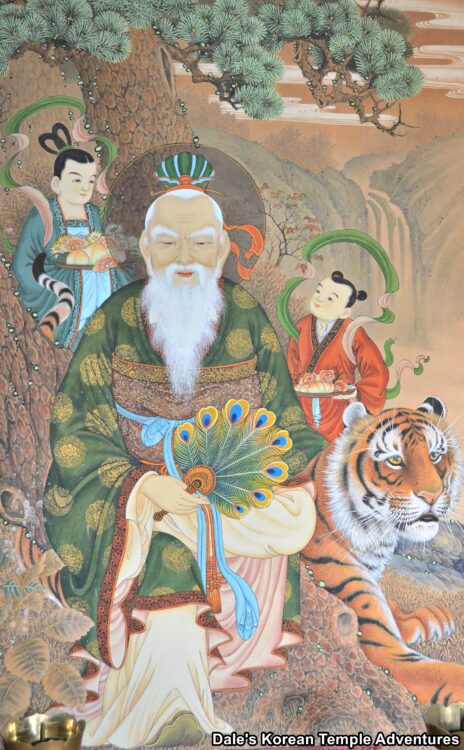
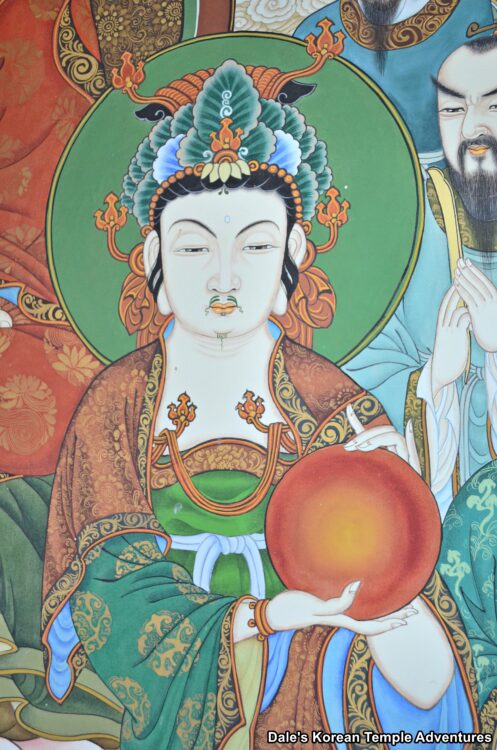
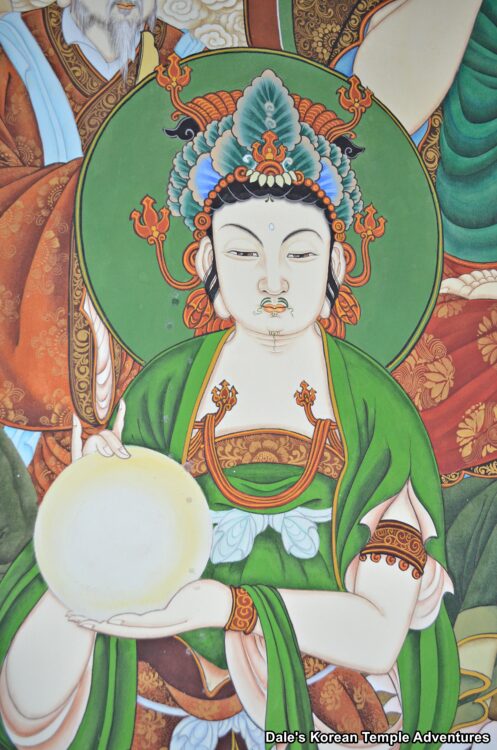


Recent comments